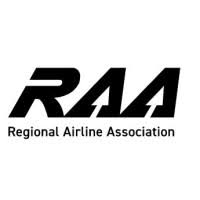Source: RAA
In response to a Senate Commerce Hearing on Strengthening the Aviation Workforce, Regional Airline Association (RAA) President and CEO Faye Malarkey Black offered the following statement:
“RAA applauds the Senate Commerce Committee for hosting the hearing. It was clear during the hearing that the Members understand that the growing pilot shortage and an even more acute shortage of airline captains—a byproduct of letting the pilot shortage worsen—has driven a collapse in small community air service across the United States. These harms will continue to worsen without both long-and near-term solutions. Already, 324 airports have lost, on average, a third of their air service. The smallest airports have fared the worst. Fourteen airports have lost all air service. More than 50 airports have lost more than half of their air service. Air service loss means fewer destinations, less frequency, longer layovers, more connections, reduced convenience, and higher costs for passengers. Air service loss drives more travelers to our highways, where the traffic fatality rate is soaring. Air service loss makes it harder for communities to attract investment, generate employment, and provide mobility and vital services to their citizens.
Unfortunately, one of today’s witnesses claimed that airlines are lying about the pilot shortage and small community exits. Such a claim defies common sense and logic. Nearly every major airline and regional airline CEO has explained in multiple published reports and during highly regulated quarterly earnings calls—where there are stiff penalties for false reports—that deep air service losses to otherwise profitable smaller communities are the direct result of the pilot shortage.
Today’s witness also mischaracterized pilot training and career access improvements as erosions to critical safety standards. This is demonstrably false. Impeccable, empirical data from numerous studies—updates of the same studies the FAA relied on to inform the 2013 pilot training rule in question—have proven the fallacy of relying on flight time as a proxy for pilot experience. These same studies show that structured training pathways produce higher competency.
Today, most pilots do not qualify through such structured training pathways; instead, they qualify by obtaining flight time. As a result, pilots entering airline training programs today are less prepared for the part 121 flying environment. Despite their high flight time, they have not mastered swept wing jet aerodynamics, they lack crucial experience in congested airspace, they have no experience recovering from high altitude upsets, they have not experienced engine fires, failures or other mechanical problems, they have never experienced icing, they have never operated in a thunderstorm, they have never experienced wind shear, and they have no experience operating in a multi-crew environment or using crew resource management, a cornerstone of flight safety.
In response to this reduced relevant experience, airlines must conduct remedialtraining to provide skills that should be part of a pilot’s foundation. To keep flying safe, every regional airline has significantly expanded its training footprint to provide more classroom time, extra simulator and other training sessions, and have had to lengthen initial operating experience time before pilots are ready to fly. Airlines also fail out more candidates today than they did before the qualification standards favored flight time over quality training. Airlines will continue to ground aircraft before allowing any safety erosion. More than 400 aircraft are parked today.
There is a better way. Airlines and highly credentialed pilot training institutions propose to offer more structured training pathways. These pathways are fully aligned with and allowed by the 2010 Airline Safety Act, and FAA has the authority to approve them if and only if they enhance aviation safety. The time to do so is now. No airline would take a ten-year-old training program and assume it remains relevant today, and neither should the FAA or Congress. As we enhance structured training, integrating flight time with support from modern technologies, flight simulators, and advanced flight training devices, we can additionally and unequivocally improve pilot training and proficiency by ensuring pilots get the relevant experience in the right way.
Lawmakers have a simple choice before them. They can look deeply into the problem and the facts surrounding pilot training and qualification and allow for improvement of that training by taking advantage of the advancements in training programs and technologies over the last decade. Or, they can follow the special interests who seem to believe that maintaining a large moat around the pilot career advantages those already in the profession and that ‘advantage’ is somehow worth the resulting harm both to communities that are losing air service and those candidates who cannot access transformational pilot careers because they can’t afford to build the required flight time on their own.
Advancing pilot training is about building a foundation for pilots with the right skills and the right tools to meet tomorrow’s needs. Well-reasoned proposals for more structured training can deliver squarely on this objective. These proposals deserve thoughtful consideration.”

